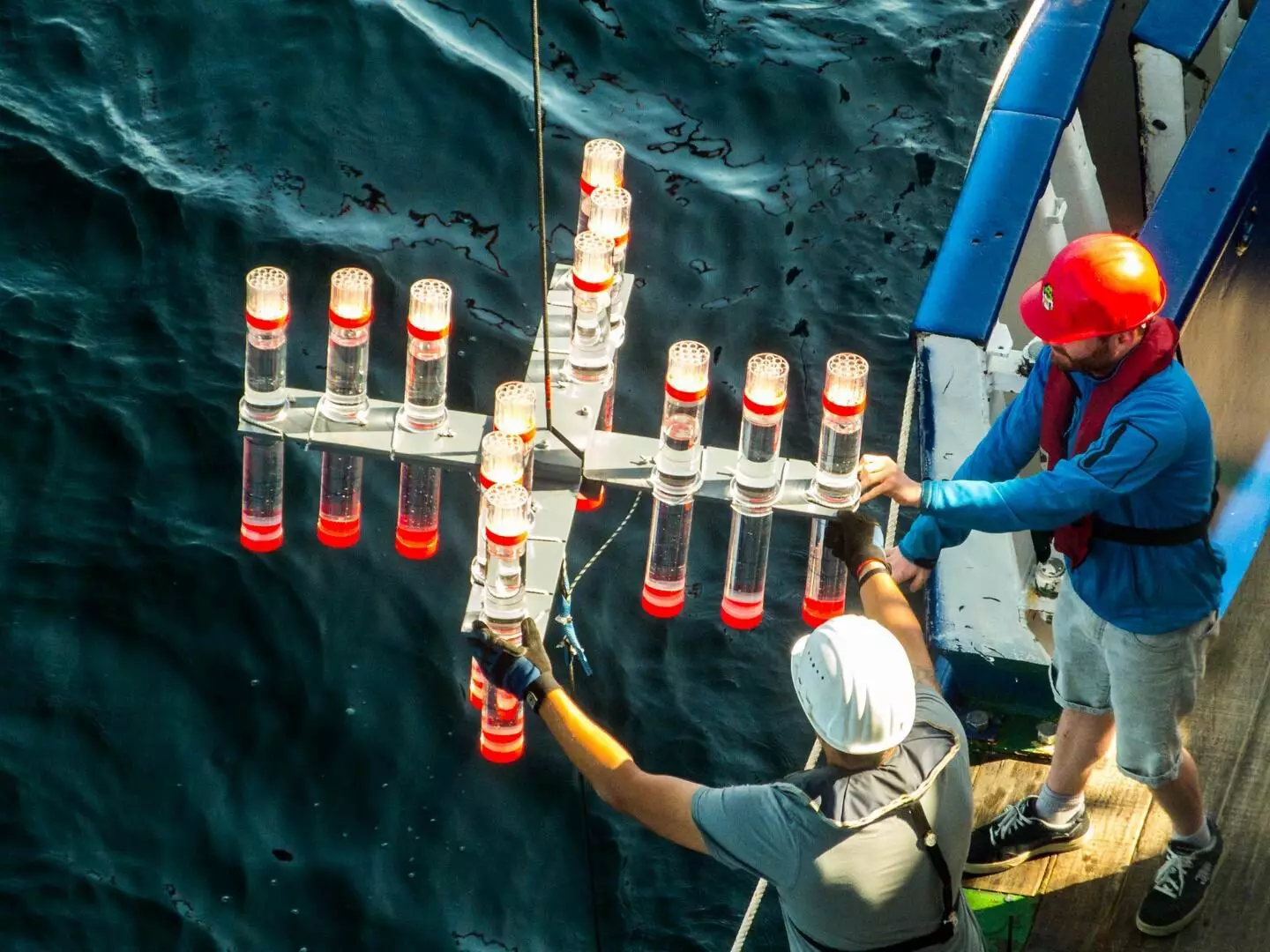Marine organisms are vital for the global carbon cycle as they absorb carbon dioxide from the atmosphere and store it in organic matter. This process, known as the biological carbon pump, plays a crucial role in mitigating climate change. Until now, it was believed that this pump is most efficient in oxygen-poor areas. However, a groundbreaking study conducted by researchers at the GEOMAR Helmholtz Center for Ocean Research Kiel reveals that the influence of certain zooplankton species on the biological carbon pump has been severely underestimated.
In the ocean, organic particles from the sunlit surface water sink to the deep ocean, binding carbon dioxide and providing energy to deep-sea ecosystems. This sinking process is a crucial part of the biological carbon pump. Previous studies have suggested that the biological pump is highly efficient in areas with oxygen minimum zones (OMZs) below the surface. It was thought that the lack of oxygen in these zones restricts the ability of particle consumers, such as zooplankton, to reduce the export of carbon to the deep sea.
Rethinking the Efficiency of the Biological Carbon Pump
The research team from GEOMAR Helmholtz Center for Ocean Research Kiel challenges this prevailing assumption in their latest study. Focusing on the tropical upwelling system off the coast of Peru, they demonstrate the significant influence that zooplankton species can have on the efficiency of the biological carbon pump in these areas. They specifically investigate carbon fluxes and their attenuation in an area with a longstanding permanent oxygen minimum zone.
Through extensive sampling in the Humboldt Current using sediment traps, plankton net hauls, and underwater cameras, the researchers were able to gather comprehensive data on the occurrence of various zooplankton species. Their results provide consistent evidence that zooplankton, even in low-oxygen systems, interact with sinking particles and thereby reduce carbon export to the deep sea. The zooplankton species found off the coast of Peru have adapted to living under low-oxygen conditions, and therefore play a key role in regulating the carbon pump in this region.
Redefining the Understanding of Oxygen Minimum Zones
The findings of this study challenge the previously held belief of a uniformly efficient biological carbon pump in oxygen minimum zones. By highlighting the crucial role of zooplankton, the researchers emphasize the need for increased observations and knowledge of deep-sea ecosystems. This is necessary to make accurate predictions about the marine carbon cycle and its implications for climate change.
In light of their groundbreaking findings, the authors strongly advocate for an extensive increase in observations and research concerning deep-sea ecosystems. It is essential to gather more data and expand our understanding of the interactions between zooplankton, sinking particles, and the carbon pump. Only through these efforts can we make reliable predictions and effectively mitigate the impacts of climate change on the marine environment.
The influence of zooplankton on the biological carbon pump has long been underestimated. This study sheds light on the important role that zooplankton species play in reducing carbon export to the deep sea, even in low-oxygen zones. By redefining our understanding of the efficiency of the biological carbon pump, we can better comprehend the complex dynamics of the marine carbon cycle. It is crucial that we prioritize further research and observations in order to accurately assess the impacts of climate change on our oceans and make informed decisions for the future.



Leave a Reply